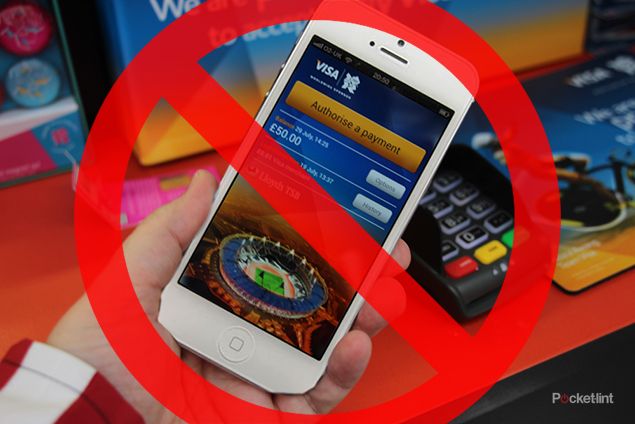While there are plenty of exciting new features Apple has introduced for the iPhone 5, perhaps the most surprising is something that has been excluded. Rumours had been flying about beforehand that the next-generation smartphone would have 4G, a widescreen Retina display, smaller dock connector and faster A6 processor, and all of those were indeed present.
However, it was also widely believed that the new iPhone would come with an NFC chip, for contactless payment and wireless communication through touch, and that failed to materialise.
Having used the Samsung Galaxy S III to pay for items as part of the London Olympics 2012 Visa trial, and subsequently in a Marks & Spencer store near to Pocket-lint Towers, there's no doubt that the technology is sound. And it does make things simpler than the conventional chip and pin credit/debit card system.
So why has Apple turned its back on the technology this time around, giving its competitors an edge for what could be another year?
Apple's senior vice-president of worldwide marketing, Phil Schiller, explained in an interview with All Things Digital that Apple's Passbook application, set to be introduced when iOS 6 hits on 19 September, is more than enough to cater for mobile payments for now.
"Passbook does the kinds of things customers need today," he said.
Passbook stores loyalty cards, boarding passes, movie tickets, retail coupons and more, effectively gives a central location for individual store payments. It's not contactless (often comprising of barcodes for vendors to scan), and we're not entirely sure it makes things simpler than the conventional card payment method, but it's a start. And it's universally accepted, unlike NFC.
That's the real reason Apple hasn't jumped on board the NFC bandwagon yet. While it's widely accepted in some territories, it's not at all yet in others. NFC is much like 4G only even further behind in its distribution, and why would Apple want to sacrifice battery life for a feature many will not be able to use?
Wireless charging is also an absentee this time around, but is less of an issue. To date, only Nokia out of the big boys has announced a phone that has it.
Schiller also explained that to have a wireless charger you still need to plug something into the wall, and a USB cable is a well-adopted means of charging. Even aircraft now have USB charging sockets.
"Having to create another device you have to plug into the wall is actually, for most situations, more complicated," he said.
Are you disappointed at the lack of NFC on the iPhone 5? Let us know in the comments below...

